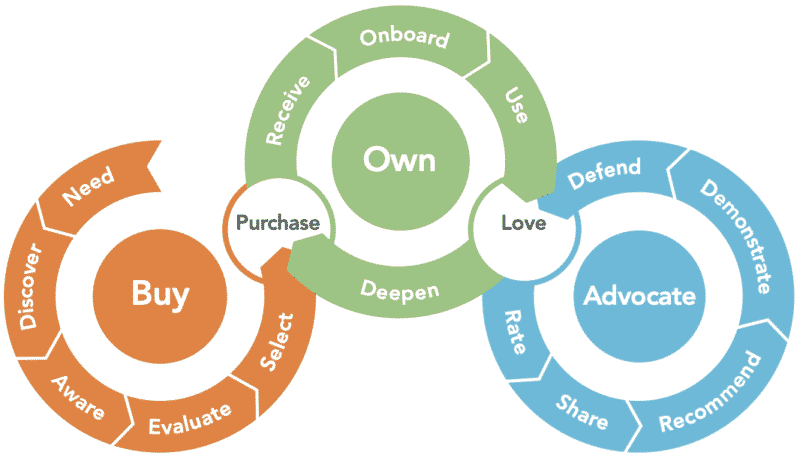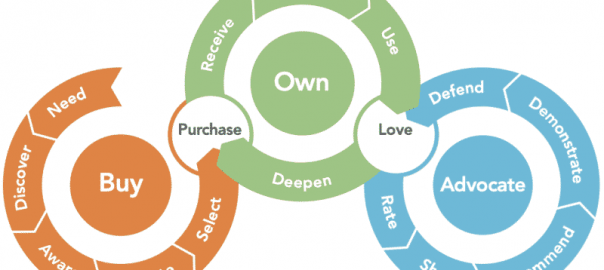Adopting a platform that gathers, visualizes and analyzes data across all of your customer touchpoints can improve revenue and customer relationships.
Customer journey analytics software lets marketers connect real-time data points from across channels, touchpoints and systems, allowing users to gain insights into the customer journey over time. This allows marketers to explore the customer journey using data.
Businesses today understand they need to be customer-focused in their marketing as well as in all of their other operations. To ensure that customers and prospects have the ideal interactions with their brands at every touchpoint, marketers first need in-depth information about the journey buyers currently navigate on their way to making a purchase, as well as how they interact post-purchase. In addition, businesses must understand what customers and prospects are trying to achieve and how existing touchpoints are falling short.
“Right now, an experience renaissance is afoot,” says Accenture Interactive, declaring that businesses should be organized around the delivery of exceptional experiences that respond to customers’ “new, often unmet and frequently changing needs and enable them to achieve their desired outcomes.”
Great customer experiences are easier to imagine than to actually understand and deliver, however, which is why tools that help marketers analyze the customer journey — customer journey analytics (CJA) software — are finding a spot in businesses’ technology stacks.
What defines customer journey analytics?
The phrase “customer journey” has been a part of the digital marketing dialogue for years, which may contribute to the lack of clarity around what exactly customer journey analytics is, and what it isn’t. The following core areas have emerged as critical to getting an actionable picture of the customer journey.
- A customer-focused, outside-in — from the customer’s point of view — approach, rather than
a product-, department- or company-led approach. - A viewpoint that starts with acquisition but spans the ownership and advocacy aspects of
the customer journey. - Data from all channels, including in-store interactions and phone calls, as well as from all
business units. - Real-time, or close to real-time, data.
- Artificial intelligence and machine learning applied to analyzing the customer journey anddelivering insights on the next best action.
Let’s look at these elements in more detail.
Customer-focused, outside-in approach. Marketers may have an “ideal customer journey” in mind, but a true customer journey analytics approach acknowledges the fact that today’s customers — driven in part by the COVID pandemic — expect a great deal of flexibility to tailor interactions with businesses to their own preferences.
With multiple devices, a variety of channels and many different paths to purchase, customers are in charge of their individual buying journeys, and everyone’s journey may be slightly different. Therefore it’s important that marketers look at things from the customer’s point of view, rather than sticking to a potentially outdated preconception of how people come to make a purchase.
A focus on the lifetime value of the customer. Instead of focusing solely on the awareness, interest, consideration, intent, evaluation and purchase stages — aka the “classic marketing funnel” of the buyer experience — customer journey analytics aims to nurture the relationship between the customer and the brand beyond ownership and into repeat purchases and brand advocacy.
Cross-channel data. To achieve this big picture view of the customer journey, marketers must be able to bring in data across every customer touchpoint, whether it’s led by marketing or not. This includes data from call centers, chatbots, in-store interactions and more.
Real-time or close to real-time data. One goal of customer journey analytics practitioners is to knock over any roadblocks in customers’ way, but, ideally, brands can eventually begin to deliver contextually relevant experiences to customers at their preferred touchpoints. To do this, they need to be able to gather data in real-time and respond in real-time.
Artificial intelligence and machine learning. Developing these insights and determining what the next-best-action should be for a particular customer is unlikely to occur in real-time without the benefit of artificial intelligence and machine learning, making the use of these technologies key to customer journey analytics.
What customer journey analytics tools do
A new generation of purpose-built tools have arisen for customer journey analytics and orchestration applications, while more established players have augmented their enterprise-level offerings with capabilities to facilitate this kind of analysis.
The majority of vendors offer one or more of the following capabilities to give marketers an understanding of the customer journey:
- Data gathering from a wide variety of channels and touchpoints.
- Analysis using artificial intelligence and machine learning.
- Customer journey visualization.
Many vendors also offer customer journey orchestration (CJO) capabilities, which allow users to act upon the insights and actually deliver the next step in the customer journey in real-time.
Let’s look more closely at these capabilities.
Data gathering
The utility of a customer journey analytics tool is directly related to what percentage of the entire customer journey is collected and brought in for analysis. Because consumer behavior is changing so rapidly, it’s difficult to anticipate emerging buying patterns — so having a comprehensive view of interactions is critical for getting a handle on what your customers are encountering along their path to purchase.
Vendors often gather data from a wide variety of sources including display advertising, streaming video platforms, call centers and chatbots.
Customer journey visualization
Because today’s customer journeys are so complex, it’s challenging to display them in a manner that enables them to be easily understood and acted upon. The vendors profiled in this report use a variety of visualization techniques and allow users to look at data from multiple angles and at different depths.
This functionality is particularly important for users who need to leverage this data to advocate for changes, as visualizations can be very convincing storytelling tools. Additionally, for a solution to provide value beyond marketing (in customer service, product development, etc.) visualizations must be flexible enough to serve a variety of use cases.
Data analysis
Bringing together hundreds and thousands of interactions and making sense of them is where the magic happens in CJA tools, and it’s where we are seeing a lot of interest and investment.
The vast amount of data involved makes this problem ideal for the use of artificial intelligence and machine learning. Technologies for sentiment analysis are often a part of this element, as well, since applying these techniques to customer communications — emails, call center transcripts, chatbot conversations — can provide valuable insights into the customer’s mindset.
While today’s tools are able to deliver some insights, predictions and suggestions for next best actions, we expect this area to see significant advancement.
Customer journey orchestration
Naturally, identifying the next best action works best when you’re in a position to execute on the insights you’ve derived, and many vendors offer orchestration functionality, often through integrations with content management systems, marketing automation platforms, demand-side platforms, etc.

The benefits of using customer journey analytics tools
Adopting a platform that gathers, visualizes and analyzes data across all of your customer touchpoints can yield significant benefits, including the following:
- Improved alignment among business units. Committing to customer journey analytics requires that every business function — marketing, sales, customer service, product development — contribute data on the points where they touch the customer throughout the life cycle. This knowledge sharing and coordination, as well as the insights gained by doing so, can help align the various business units by giving them a common view of the
customer and allowing them to agree to overarching goals. - Increased revenue. At its most basic level, customer journey analytics can allow businesses to identify roadblocks that are preventing prospects from making purchases, thereby improving return on marketing investment. More broadly, however, truly understanding your customer and focusing on providing them with what they’re seeking for the duration of your relationship can pay dividends for the longer term, resulting in cross-sells, up-sells,
return purchases and brand advocacy. - More agile marketing and operations. The rapid changes in social and purchase behavior brought about by the COVID pandemic served as a lesson to many business leaders, hammering home the importance of listening to customers and prospects in real-time. The data and insights gathered through practices like customer journey analytics allow businesses to more quickly pivot to respond to customer needs as the environment changes.
- A better relationship with your customer. Some of the biggest trends to emerge from the COVID pandemic have nothing to do with illness or even working from home. All of the shake-ups to our normal routines, as well as the re-examination prompted by social movements like Black Lives Matter, have customers looking for a different type of
relationship with the businesses they patronize.
Multiple surveys indicate that customers are seeking businesses that understand them — that empathize with their needs. One in four people that responded to a Deloitte global consumer survey last year strongly agreed that they walked away from brands they believe acted in self-interest. “Simultaneously, more than 70% agreed that they valued the digital innovations that deepened their connection with others during COVID-19,” Deloitte’s 2021
Global Marketing Trends report said.
Additionally, customers are increasingly seeking out businesses whose values align with their own, such as those that commit to addressing systemic racism and inequality. Though customer journey analytics solutions can’t make a business more human, empathetic or socially conscious, they can help businesses understand their customers’ values and concerns.
The post What is customer journey analytics and how are these tools helping marketers? appeared first on MarTech.
(52)
Report Post






